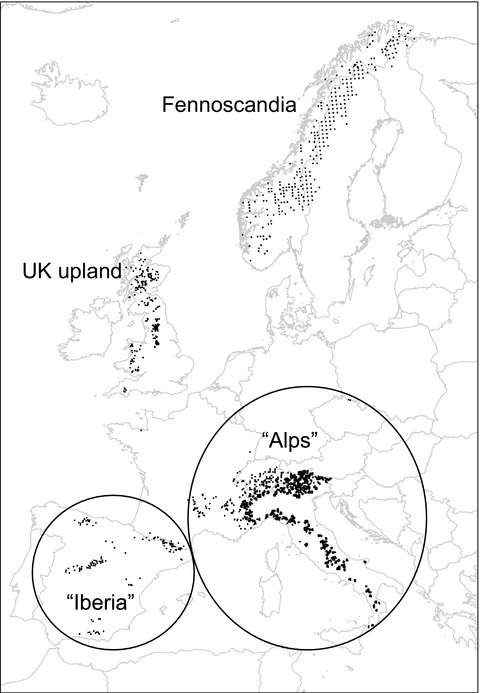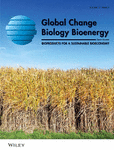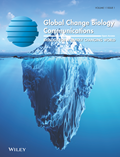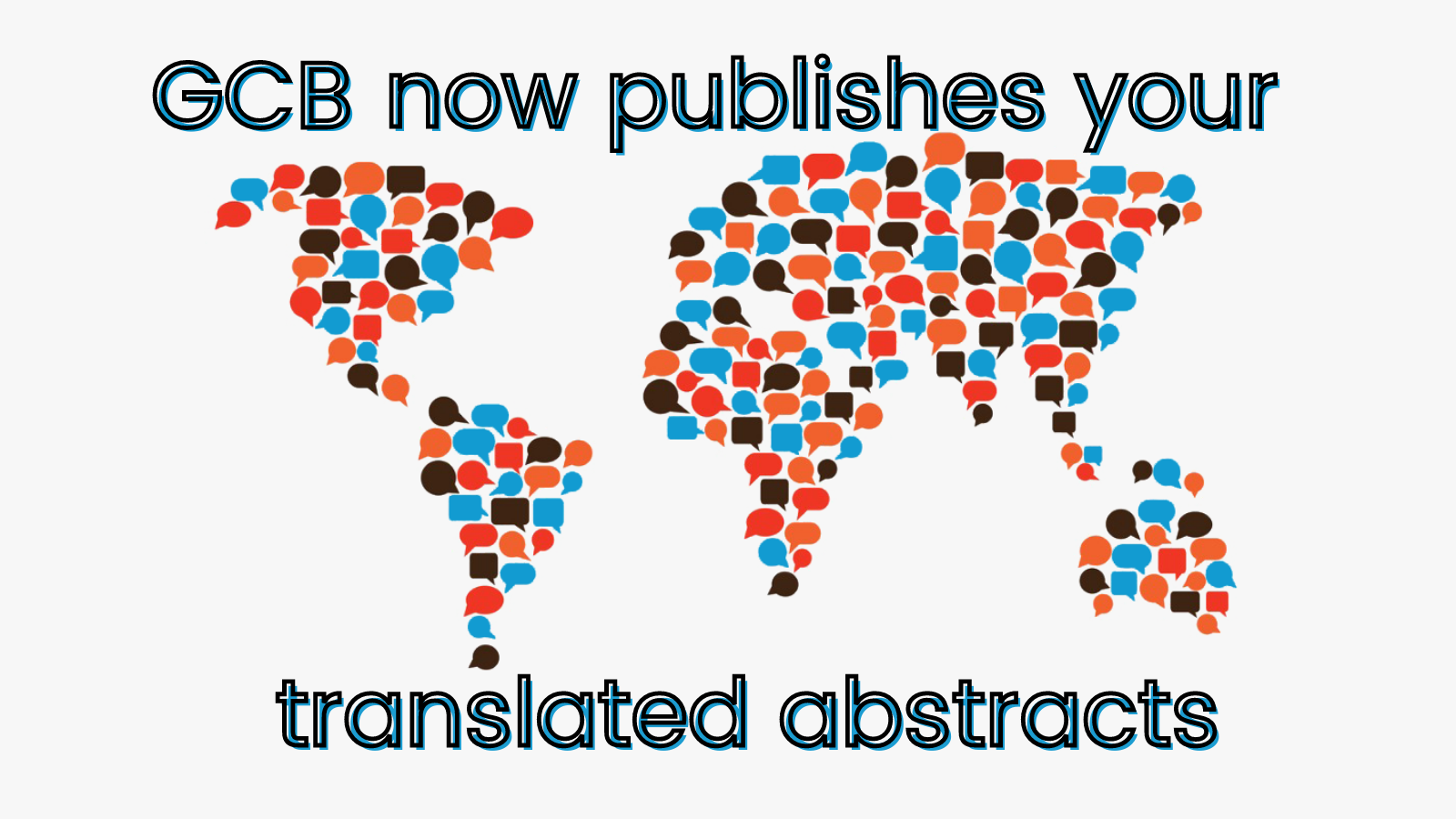Journal list menu
Export Citations
Download PDFs
ISSUE INFORMATION
OPINION
Soil aggregates as biogeochemical reactors and implications for soil–atmosphere exchange of greenhouse gases—A concept
- Pages: 373-385
- First Published: 09 November 2018
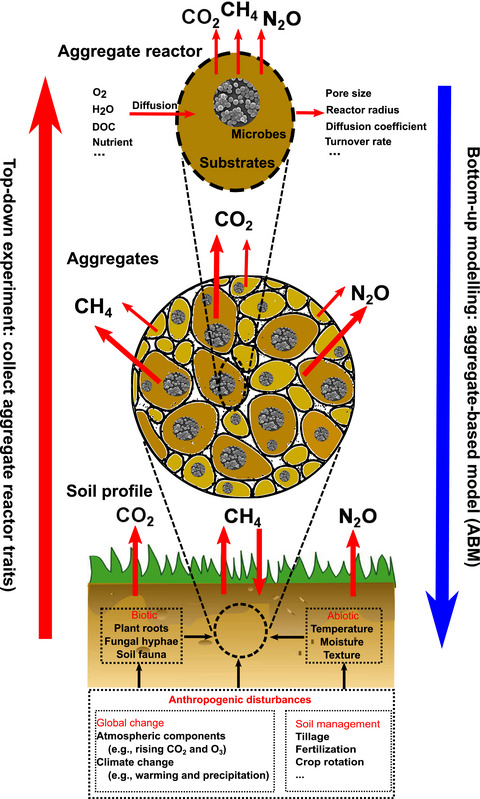
How should we view soils beneath our feet of huge heterogeneity? We argue for a bottom-up approach that aggregates, as relatively separate micro-environments embedded in a complex soil matrix, can be viewed as biogeochemical reactors of GHGs. Being inspired by the individual-based models in ecological systems, especially forest systems since the 1970s, we further propose to develop aggregate-based models (ABMs) to simulate soil systems composed of aggregates of different sizes.
Managing for soil carbon sequestration: Let’s get realistic
- Pages: 386-389
- First Published: 28 November 2018
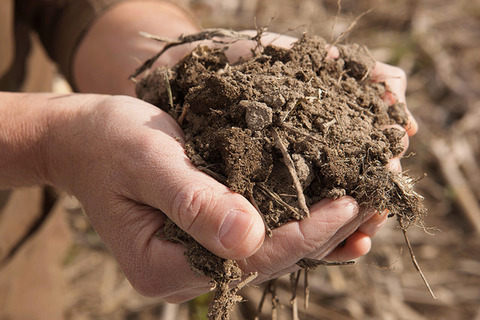
Improved soil management is increasingly pursued to ensure food security for the world's rising global population, with the ancillary benefit of storing carbon in soils to lower the threat of climate change. While all increments to soil organic matter are laudable, we suggest caution in ascribing large, potential climate change mitigation to enhanced soil management. We find that the most promising techniques, including applications of biochar and enhanced silicate weathering, are not likely to balance more than 5% of annual emissions of CO2 from fossil fuel combustion.
PRIMARY RESEARCH ARTICLES
Least concern to endangered: Applying climate change projections profoundly influences the extinction risk assessment for wild Arabica coffee
- Pages: 390-403
- First Published: 16 January 2019

Arabica coffee (Coffea arabica) is a key crop in many tropical countries and globally provides an export value of over US$13 billion per year. Wild Arabica coffee is of fundamental importance for the global coffee sector and of direct importance within Ethiopia, as a source of harvestable income and planting stock. In this paper we show that under climate change alone, population numbers could reduce by 50% or more (with a few models showing over 80%) by 2088. When applying the International Union for Conservation of Nature’s Red list of Threatened Species (IUCN Red List) criteria, even with a very conservative generation length of 21 years, wild Arabica coffee is assessed as Threatened with extinction (placed in the Endangered category) under a broad range of climate change projections, if no interventions are made. Importantly, if we do not include climate change in our assessment, Arabica coffee is assessed as Least Concern (not threatened) when applying the IUCN Red List criteria.
Back to the future? Late Holocene marine food web structure in a warm climatic phase as a predictor of trophodynamics in a warmer South-Western Atlantic Ocean
- Pages: 404-419
- First Published: 14 November 2018
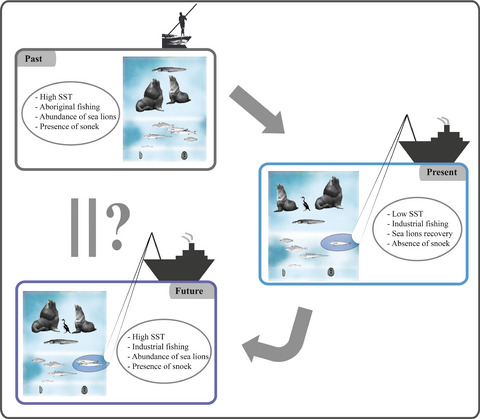
The most important finding of this work is the high trophic overlap between snoek and hake during the Late Holocene. Furthermore, all the species that have undergone intense human exploitation significantly increased their trophic levels. Finally, increasing Sea Surface Temperature (SST) could favour the recolonization of the southern South-Western Atlantic Ocean by snoek, with a likely impact on the population of hake.
Declines in northern forest tree growth following snowpack decline and soil freezing
- Pages: 420-430
- First Published: 30 November 2018
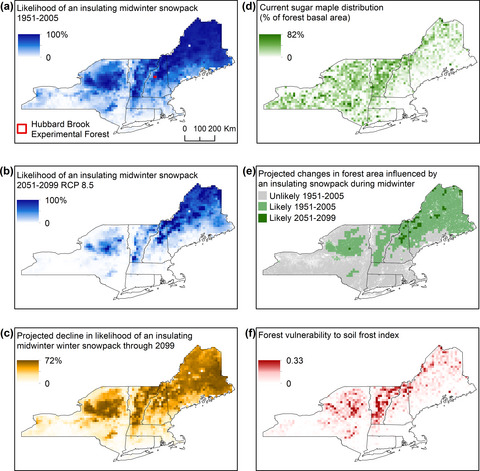
Climate change is projected to reduce the depth and duration of insulating winter snowpack and increase the severity of soil freezing across northern forests. Using a 5-year snow removal experiment in New Hampshire, USA we show that these changes in winter climate result in a 40% reduction in growth of sugar maple trees, a dominant species across northern hardwood forests. Furthermore, we estimate a 95% reduction in forest area experiencing insulating snowpack by the year 2099 in the Northeastern U.S. These findings indicate that research considering only growing season climate overestimates tree growth response to warming in seasonally snow-covered ecosystems.
Environmental and physiochemical controls on coral calcification along a latitudinal temperature gradient in Western Australia
- Pages: 431-447
- First Published: 19 November 2018
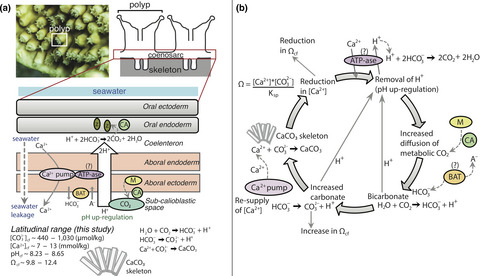
We report in situ changes in coral calcification rates, photo-physiology, and calcifying fluid (cf) carbonate chemistry (using boron isotopes, elemental systematics, and Raman spectroscopy) for corals growing in their natural environments at tropical, subtropical, and temperate locations in Western Australia. We find that changes in coral calcification rates are primarily driven by pHcf and carbonate ion concentration in conjunction with temperature and DICcf. Our results further indicate that corals shift their pHcf to adjust to their localized thermal regimes. This biological response is likely to have critical implications for determining the future of coral reefs under CO2-driven warming and acidification.
Susceptibility of European freshwater fish to climate change: Species profiling based on life-history and environmental characteristics
- Pages: 448-458
- First Published: 12 November 2018
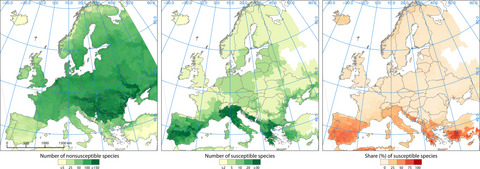
We collated life history traits and climatic niches of all European freshwater fish species and compared those identified as susceptible to climate change to those that are considered to be resilient. Significant differences were observed between the two groups in their distribution, life-history, and climatic niche, with climate-change-susceptible species being distributed within the Mediterranean region, and being characterized by greater threat levels, lesser commercial relevance, lower vulnerability to fishing, smaller body and range size, and warmer thermal envelopes. We establish a list of species of highest priority for further research and monitoring regarding climate change susceptibility within Europe.
Twenty-first-century climate change impacts on marine animal biomass and ecosystem structure across ocean basins
- Pages: 459-472
- First Published: 08 November 2018
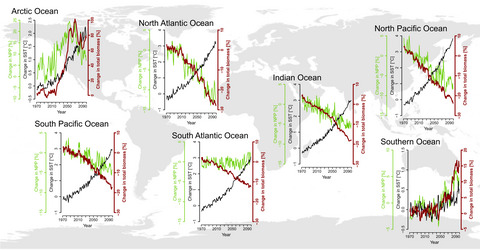
This study uses an ensemble of six marine ecosystem models to analyze responses of marine animal biomass in all major ocean basins to contrasting climate change scenarios. We show that, by the end of the 21st century, under the high emissions scenario (RCP8.5), projected marine animal biomass substantially declined in all, except the polar ocean basins, in which biomass was projected to increase. Projected biomass changes were reduced under the low emissions scenario (RCP2.6). Further, we highlight that climate change mitigation could moderate the impacts on marine animal biomass by reducing biomass declines in the Pacific, Atlantic, and Indian Ocean.
Nitrous oxide emissions from inland waters: Are IPCC estimates too high?
- Pages: 473-488
- First Published: 29 October 2018
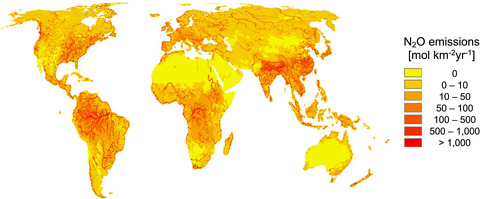
Nitrous oxide (N2O) emissions from inland waters remain a major source of uncertainty in global greenhouse gas budgets. In this work, we develop a mechanistic modeling approach to explicitly predict N2O production and emissions via nitrification and denitrification in rivers, reservoirs and estuaries. Our results indicate that IPCC emissions predictions are likely overestimated by up to an order of magnitude, and that achieving the magnitude of the IPCC's estimates is kinetically improbable in most river systems.
Arctic browning: Impacts of extreme climatic events on heathland ecosystem CO2 fluxes
- Pages: 489-503
- First Published: 25 November 2018
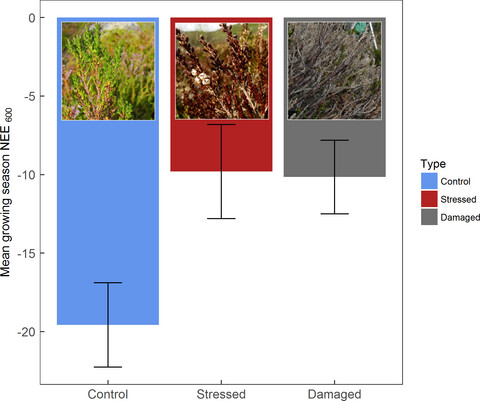
Extreme climatic events are among the drivers of vegetation damage and decline observed across Arctic ecosystems in recent years; termed “Arctic browning.” Although these events can cause landscape-scale vegetation damage, their impacts on ecosystem CO2 balance are little understood. Here, it is demonstrated that these events can have major impacts on CO2 balance, considerably reducing the carbon sink capacity of the ecosystem across the growing season. These impacts can be similar when associated with shoot mortality, or with shoot stress responses.
Bottom-up and top-down effects of browning and warming on shallow lake food webs
- Pages: 504-521
- First Published: 15 November 2018
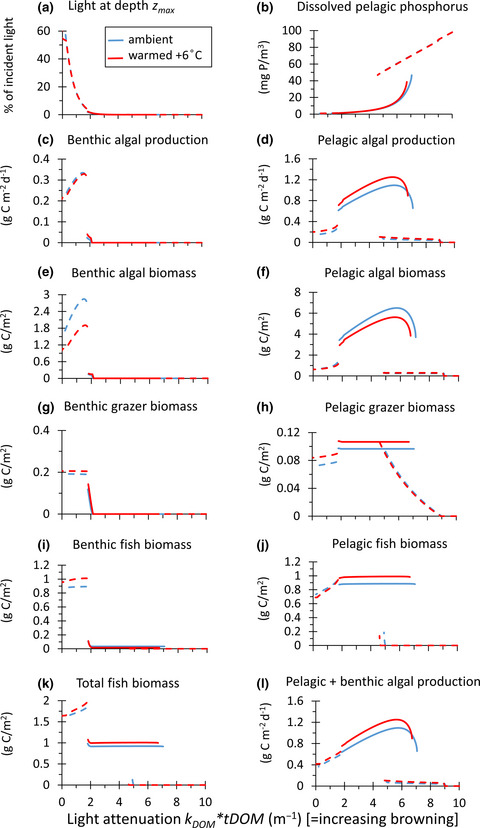
Productivity and trophic structure of aquatic ecosystems result from the interplay of bottom-up and top-down forces across benthic and pelagic food web compartments. Using a process-based model, we investigated how shallow lake ecosystems respond to browning (terrestrial dissolved organic matter), nutrient enrichment and warming. The model predicts that browning and nutrient enrichment shift productivity from the benthic to the pelagic habitat, whereas warming relaxes control of grazers by fish, thus decreasing primary producer biomass. Predicted warming effects are, however, small compared to effects of browning and nutrient enrichment. A pond-scale manipulation of browning and warming corroborated many of these expectations.
Climate change resilience of a globally important sea turtle nesting population
- Pages: 522-535
- First Published: 19 December 2018
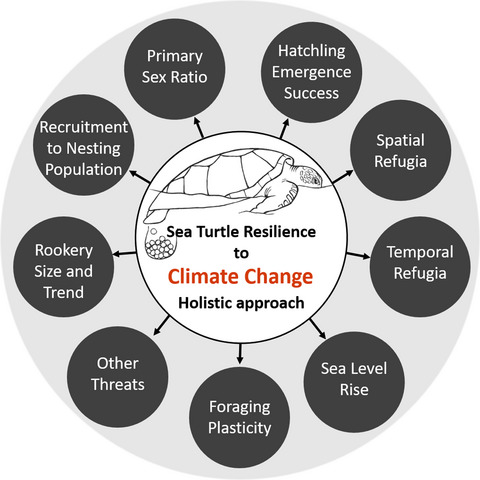
Using an integrated approach, we assess climate change resistance at a globally important green sea turtle rookery in Poilão Island, West Africa. We project 200 years of primary sex ratios (1900–2100), create a digital elevation model of the nesting beach to estimate impacts of projected sea level rise, and assess the availability of temporal and spatial microrefugia, degree of foraging plasticity, rookery size and trajectory, and prevailing threats, within a quantitative framework. We estimate that this nesting population should resist climate change impacts until the end of this century and suggest this approach for other species and populations.
Trade-offs between carbon stocks and biodiversity in European temperate forests
- Pages: 536-548
- First Published: 22 November 2018
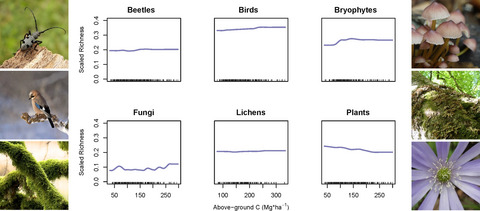
Can managing forests for storing carbon jointly achieve biodiversity conservation and climate change mitigation goals? Global and regional environmental policies often assume co-benefits between carbon and biodiversity, but it is unclear whether this assumption holds at fine scales relevant for management. By modelling the carbon–biodiversity relationship for a broad range of taxa in temperate forests, we found that biodiversity and carbon stocks are not well-aligned spatially at stand-scale, and their relationship varied substantially across taxa. This suggests that forest management aimed at storing carbon may benefit some taxa but harm others, highlighting that broad-scale co-benefits may break down at fine scales.
Novel microbial community composition and carbon biogeochemistry emerge over time following saltwater intrusion in wetlands
- Pages: 549-561
- First Published: 09 December 2018

Sea level rise is expected to cause saltwater intrusion into historically freshwater wetlands, leading to shifts in microbial metabolism that alter greenhouse gas emissions and soil carbon sequestration. Here, we aimed to understand the temporal changes in microbial community composition and biogeochemical activity following saltwater intrusion in a 1-year field manipulation experiment. Our results suggest the development of a unique successional microbial community may underpin methane production following saltwater intrusion. Further, the gradual changes composition and function we observed may indicate that previously freshwater wetlands may not experience an equilibration of ecosystem function until long after initial saltwater intrusion.
Miami heat: Urban heat islands influence the thermal suitability of habitats for ectotherms
- Pages: 562-576
- First Published: 02 November 2018
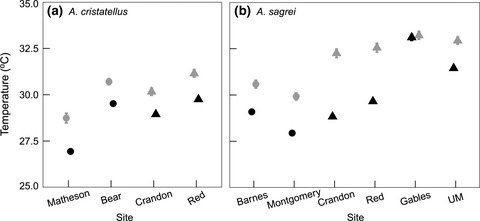
The urban heat island effect, in which urban areas are warmer and more thermally variable than surrounding natural habitats, can influence how organisms persist in cities. We measured environmental and body temperatures, and thermal traits, of two lizard species (Anolis cristatellus and Anolis sagrei), in natural forest and urban sites in Miami, FL, USA. We found that while thermal traits did not differ between urban and natural populations, in urban sites, environmental and body temperatures were higher. Urban areas are likely more suitable for A. sagrei, the species with higher thermal preference, while natural areas favor A. cristatellus.
Declining population trends of European mountain birds
- Pages: 577-588
- First Published: 11 December 2018
Projected changes in wind assistance under climate change for nocturnally migrating bird populations
- Pages: 589-601
- First Published: 09 December 2018
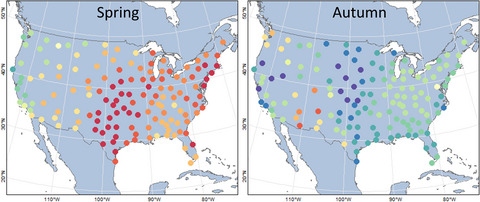
We used information compiled from 143 weather surveillance radars stations within the contiguous USA to estimate the altitude, density, and direction of nocturnal migration during the spring and autumn. We intersected this information with wind projections to estimate how wind assistance is expected to change during this century under global climate change. Across the eastern and especially the central portions of the continent, the efficiency of nocturnal migration is projected to increase in the spring and decrease in the autumn, potentially affecting time and energy expenditures for many migratory bird species.
Sediment deposition from eroding peatlands alters headwater invertebrate biodiversity
- Pages: 602-619
- First Published: 10 November 2018
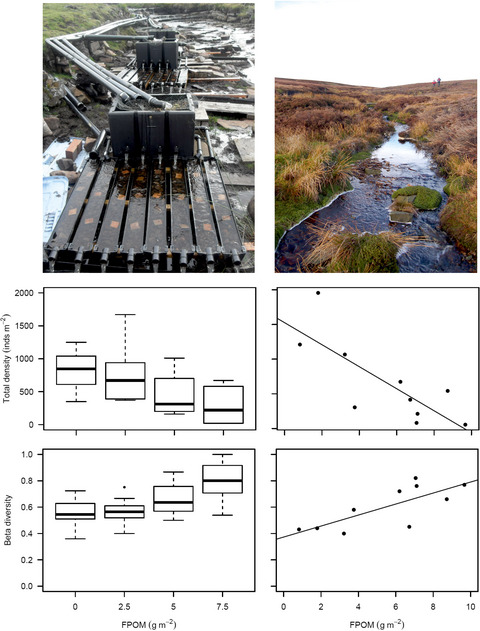
Land use and climate change are driving widespread modifications to the biodiverse and functionally unique headwaters of rivers. In temperate and boreal regions, many headwaters drain peatlands where land management and climate change can cause significant soil erosion and peat deposition in rivers. We provide two lines of evidence—derived from sediment deposition gradients in experimental mesocosms and headwaters—for the adverse impact of peat deposition on invertebrate community biodiversity.
Presence of an invasive species reverses latitudinal clines of multiple traits in a native species
- Pages: 620-628
- First Published: 29 November 2018

Change in abiotic factors such as climate may lead to shifts in species’ traits across their ranges, but the impacts of biotic elements of global change on latitudinal clines in species’ traits are less well understood. We find evidence that the presence of predatory invasive fire ants alters clines in the behavior, stress responsiveness, and morphology of a native lizard within 80 years (≈40 lizard generations). These results suggest that biotic components of global change can have powerful impacts across multiple organismal systems and large geographical extents even over relatively short time periods.
Ocean acidification increases iodine accumulation in kelp-based coastal food webs
- Pages: 629-639
- First Published: 08 October 2018
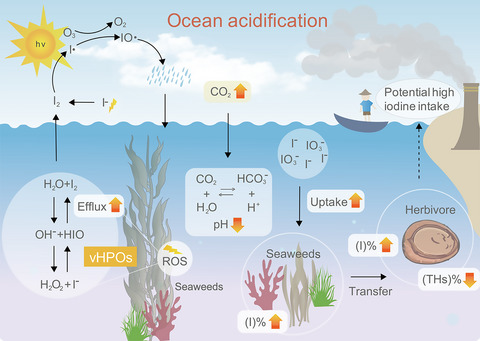
Kelp are main iodine accumulators in the ocean, and their growth and photosynthesis are likely to benefit from elevated seawater CO2 levels due to ocean acidification. However, there are currently no data on the effects of ocean acidification on iodine metabolism in kelp. Here, we found that ocean acidification increases iodine accumulation in kelp-based coastal food webs. There is a potential risk of iodine overconsumption in consumers of kelps if pCO2 increases as projected for the coming decades.
Global soil nitrous oxide emissions since the preindustrial era estimated by an ensemble of terrestrial biosphere models: Magnitude, attribution, and uncertainty
- Pages: 640-659
- First Published: 10 November 2018
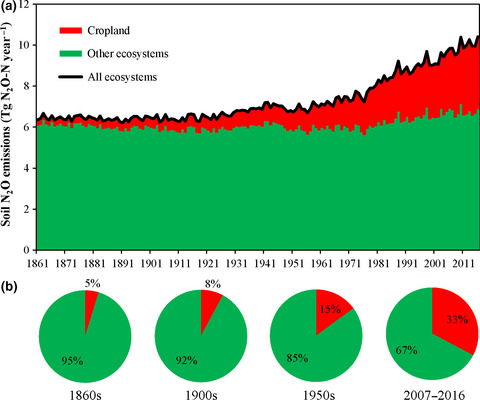
The ensemble of terrestrial biosphere models indicates that global soil N2O emissions have increased from 6.3 ± 1.1 Tg N2O-N/year in the preindustrial period (the 1860s) to 10.0 ± 2.0 Tg N2O-N/year in the recent decade (2007–2016). Cropland soil emissions increased from 0.3 Tg N2O-N/year to 3.3 Tg N2O-N/year over the same period, accounting for 82% of the total increase, among which 54% attributes to nitrogen fertilizer application. Regionally, China, South Asia, and Southeast Asia underwent rapid increases in cropland N2O emissions since the 1970s. However, European cropland N2O emissions appear to have decreased by 14%.
Functional reorganization of marine fish nurseries under climate warming
- Pages: 660-674
- First Published: 27 October 2018
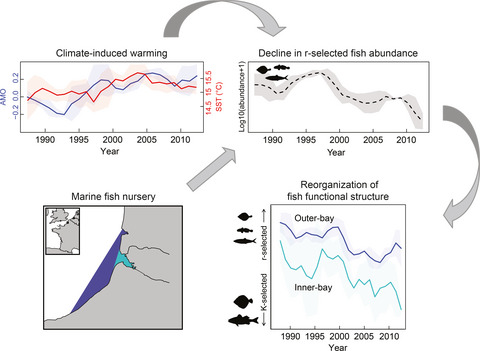
We examined the dynamics of fish functional structure in a coastal marine nursery over a 26-year period. We found that rapid warming leads to functional reorganization of fish communities, with a roughly 80% decline in overall abundance and a switch from r-selected to K-selected dominance. The nursery was initially dominated by planktivores and benthivores with low trophic level, low age and size at maturity, and small offspring size, which were highly impacted by warming, while large-bodied, slow-growing piscivores and benthopiscivores were more resistant. Marine fish nurseries dominated by r-selected species may therefore be vulnerable to future climate warming.
Weather effects on birds of different size are mediated by long-term climate and vegetation type in endangered temperate woodlands
- Pages: 675-685
- First Published: 15 November 2018
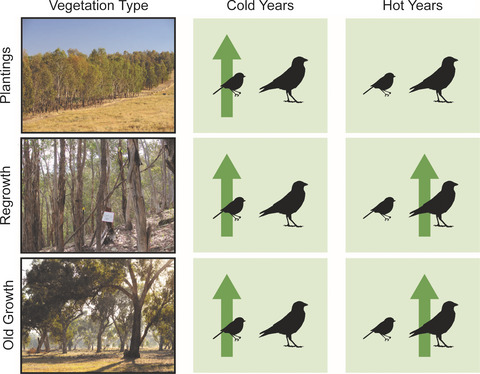
Many factors including climate, short-term weather and habitat can influence the distribution and abundance of biodiversity. The effects of these factors are often studied independently. Yet it is increasingly clear that many of these drivers interact with one another. In this paper for Global Change Biology, we explicitly study the interactions of long-term climate, short-term weather, habitat availability and life-history attributes on bird biodiversity.
Limited potential of harvest index improvement to reduce methane emissions from rice paddies
- Pages: 686-698
- First Published: 18 November 2018

Breeding efforts optimizing photosynthate allocation to grains, i.e., increasing harvest index (HI), are widely expected to reduce CH4 emissions from rice cultivation. Here we show, by combining a series of experiments, meta-analyses, and an expert assessment, that the potential of CH4 mitigation from rice paddies through HI improvement is actually small. We estimate that future HI improvement will reduce CH4 emissions in continuously flooded systems (CF) by 4.4% at most. Furthermore, HI improvement did not affect CH4 emissions in systems with intermittent irrigation (II); these systems make up a large part of the China's rice growing area and are becoming increasingly popular.
Climate change does not affect the seafood quality of a commonly targeted fish
- Pages: 699-707
- First Published: 10 November 2018
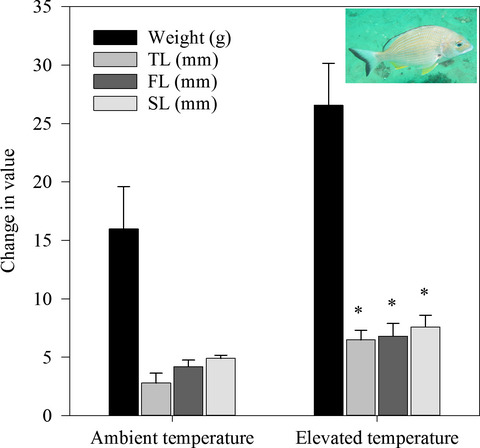
We tested the influence of near-future climate change on the growth, health and seafood quality of a recreationally and economically important fish, yellowfin bream (Acanthopagrus australis). Growth significantly increased under near-future temperature conditions, but there was little change in fish health, tissue biochemistry or nutritional properties of flesh. We contend that widely distributed species that span large geographic areas and habitats can be “climate winners” by being resilient to negative direct impacts of near-future oceanic and estuarine climate change.
Effects of climate and demography on reproductive phenology of a harvested marine fish population
- Pages: 708-720
- First Published: 14 November 2018
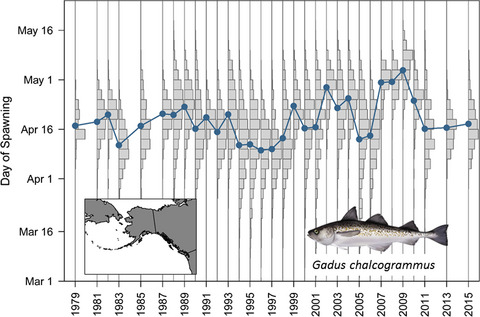
We investigate how climate and population age structure jointly affect spawning phenology of a fish species of major commercial importance: walleye pollock (Gadus chalcogrammus). Using data from historical larval surveys dating back to 1979, we find evidence that the timing and duration of spawning have shifted in response to changes in temperature as well as population age structure. In general, spawning occurs earlier and over a longer duration when spawners are older and temperatures are warmer.
Punching above their weight: Large release of greenhouse gases from small agricultural dams
- Pages: 721-732
- First Published: 20 November 2018
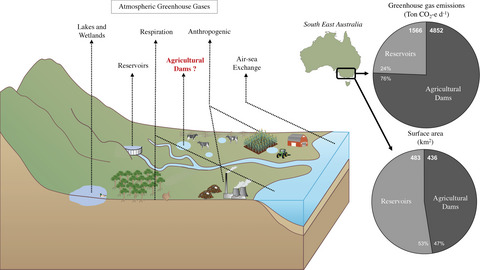
Carbon dioxide (CO2) and methane (CH4) emissions from lakes, wetlands, reservoirs and small natural ponds have been well studied; however, the GHG emissions of highly abundant, small-scale (<0.01 km2) agricultural dams (small stream and run-off impoundments) are still unknown. Here, we measured the diffusive CO2 and CH4 flux of 77 small agricultural dams within south-east Australia. The GHG emissions from these waterbodies, which are currently unaccounted for in GHG inventories, amounted to 11.12 ± 2.59 g CO2-equivalent per m2 d−1, a value 3.43 times higher than temperate reservoir emissions.
The response of stocks of C, N, and P to plant invasion in the coastal wetlands of China
- Pages: 733-743
- First Published: 22 October 2018

Here, we have investigated the relationships between the different stocks of soil organic carbon (SOC), and total C, N, and P pools in the plant–soil system from eight different wetland areas across the South-East coast of China, where the invasive tallgrass Spartina alterniflora has replaced the native tall grasses Phragmites australis and the mangrove communities The invasive success of Spartina alterniflora replacing Phragmites australis increased the store of P in both soil and standing plant biomass (approximately more than 70 and 15 kg P by ha, respectively) in the invasive than in the native tall grass communities suggesting the possibility of a decrease in the ecosystem N:P ratio with future consequences to below- and aboveground trophic chains.
Microplastic ingestion ubiquitous in marine turtles
- Pages: 744-752
- First Published: 04 December 2018
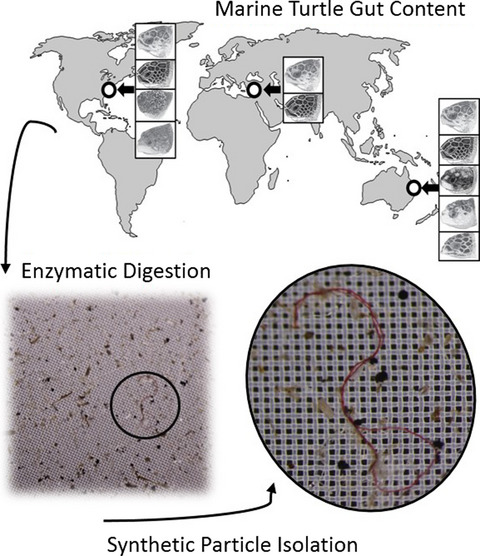
Knowledge of the incidence and levels of synthetic particles in large marine vertebrates is lacking. Here, we explore whether synthetic particles could be isolated from marine turtle ingesta and report the presence in every turtle subjected to investigation including individuals from all the seven species of marine turtle, sampled from three ocean basins. Most particles were fibres in lesser quantities were fragments/microbeads and were a range of synthetic materials. Synthetic particles isolated from species occupying different trophic levels suggest the possibility of multiple ingestion pathways. We assess the likelihood this presents a significant conservation problem at current levels.
TECHNICAL ADVANCE
Assessing climate change associated sea-level rise impacts on sea turtle nesting beaches using drones, photogrammetry and a novel GPS system
- Pages: 753-762
- First Published: 14 November 2018
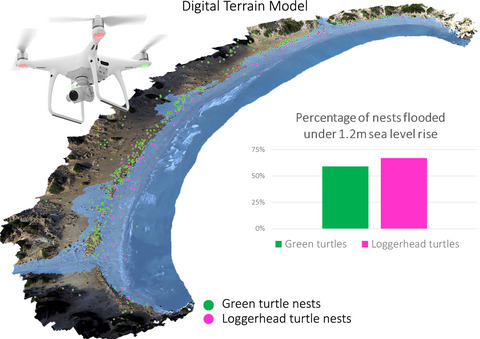
Climate change associated sea-level rise (SLR) is expected to have profound impacts on coastal areas, affecting many species, including sea turtles. Being able to accurately model beach topography and project SLR impacts is crucial to develop conservation strategies. Traditional survey methods are either expensive or not accurate enough. We present a novel combination of drone-based photogrammetry with a real-time kinematic GPS to create highly accurate and visually realistic beach topography models.





